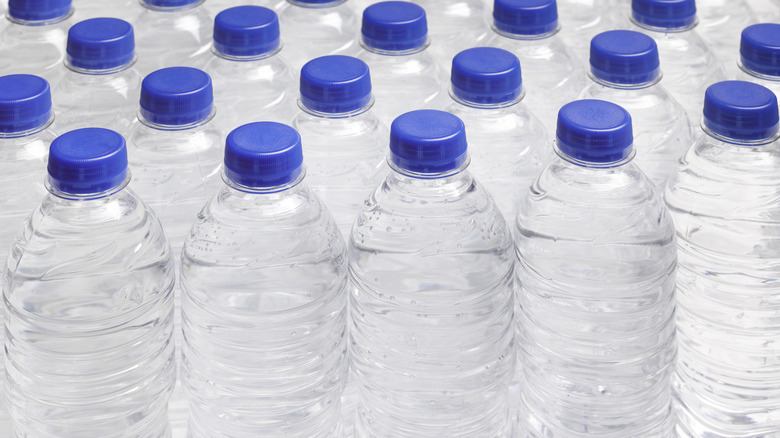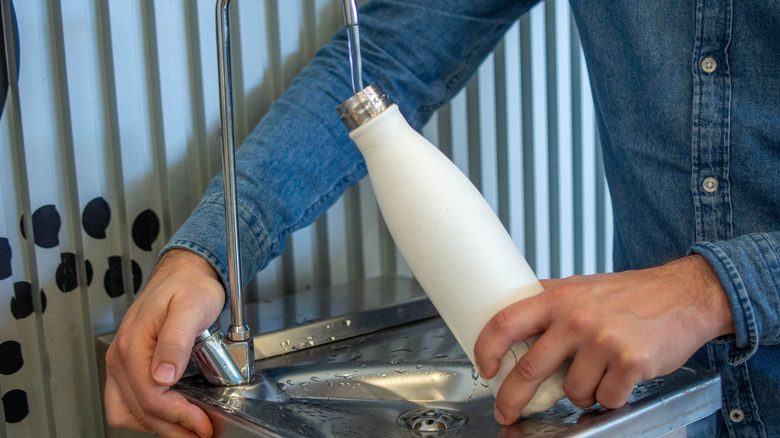Why Microplastics In Water Don't Just Come From The Bottle Itself
Scientists have known for a while now that the bottled water you're drinking probably contains tiny bits of plastic, otherwise known as microplastics or nanoplastics. A 2024 study published in the Proceedings of the National Academy of Sciences examined five samples of three common bottled water brands, finding on average, they contained around 240,000 plastic particles per liter. Contrary to what one might think, disposable plastic water bottles are not the sole source of these plastics. Per one of the study's authors, the plastic particles are also coming from the reverse osmosis filter, which is used to remove contaminants. These particles are estimated to be less than a micron in size; to put this into perspective, a single strand of human hair is 83 microns wide.
Researchers cannot definitely assert that these nanoplastics are harmful to human health, so it's unclear how the plastic particles in bottled water may be affecting our bodies. The International Bottled Water Association gave a statement to PBS saying "There currently is both a lack of standardized (measuring) methods and no scientific consensus on the potential health impacts of nano- and microplastic particles. Therefore, media reports about these particles in drinking water do nothing more than unnecessarily scare consumers."
Are microplastics avoidable in water ... or at all?
The National Bottled Water Association also pointed out that bottled water is certainly not the only consumer product to use plastic packaging. Research has indeed revealed that microplastics can be found in other beverages and foods, not only because they are packaged and stored in plastic, but also because the particles are a general environmental pollutant. Microplastics have even been found in tea bags.
So, what should individuals who exclusively drink bottled water do? The authors of the Proceedings of the National Academy of Sciences study recommended switching to tap water, though that won't completely shield you from microplastics. Tap water also contains microplastic particles, though a 2022 study from the International Journal of Environmental Research and Public Health found that tap water had lower concentrations of microplastics than bottled water on average. Plastics are so ubiquitous in our environment that it's basically impossible to completely avoid ingesting micro- and nanoplastic particles.

